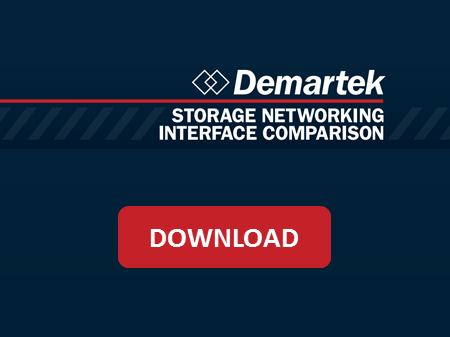The 2550100 Zone
For IT professionals looking for some rough guidelines about when and where to use 25, 50 or 100GbE, here’s our top 6 reasons to enter the 2550100 Zone:
A single socket server with one Xeon E7 8890 v3 processor has 18 cores. If your server has 2 sockets or more, it’s easy to configure 50 cores. We think so much processing power makes 25GbE server adapters an “must-have” in this case.
- Your server is hosting more than 20 virtual machines
We think a simple guideline is to configure 1Gb of server adapter bandwidth for every virtual machine. So our rule-of-thumb is if a server is hosting more than 20 VMs, it’s in the 2550100 Zone.
- Primary storage for your server is Ethernet-connected all flash storage
All-flash iSCSI and NAS arrays are not yet available with 25, 50 and 100GbE interfaces, but they’re coming. If primary storage for your server is going to be an Ethernet-connected all flash array, you might want to consider future-proofing your server with a 25GbE server adapter.
- Your application supports low-latency networking via RDMA
The Remote Direct Memory Access (RDMA) protocol has been used almost exclusively in the HPC arena for ultra low-latency cluster interconnects. The technology is going mainstream in the form of RDMA over Ethernet (RoCE) support in 25, 50 and 100GbE server adapters. Because now it’s “just there,” a variety of applications are making use of the protocol. For example, Microsoft SMB Direct is a popular scale-out file storage application which delivers best performance when the storage server and client servers have Ethernet adapters communicating with RDMA.
 You’re building a NFV software appliance
You’re building a NFV software appliance
DPDK (Data Plane Development Kit) is a set of software libraries and Ethernet drivers which allow industry standard servers t to do packet-processing at line-rate. Dell servers with Intel processors and QLogic 45000 Series 25GbE adapters supporting DPDK, form an excellent platform for router, firewall and content delivery NFV software appliances.
- You want a future-proof server rack architecture
For many IT organizations with large populations of server racks pushing the limits of 10GbE links to ToR switches, and 40GbE links to aggregation or core switches, it makes sense to consider a broad migration to a server rack architecture with 25GbE links to the ToR switches, and 100GbE links to aggregation or core switches. You’ll end up with 2.5x more performance headroom, and lot’s of new bells for a variety of different applications.
Category: News










